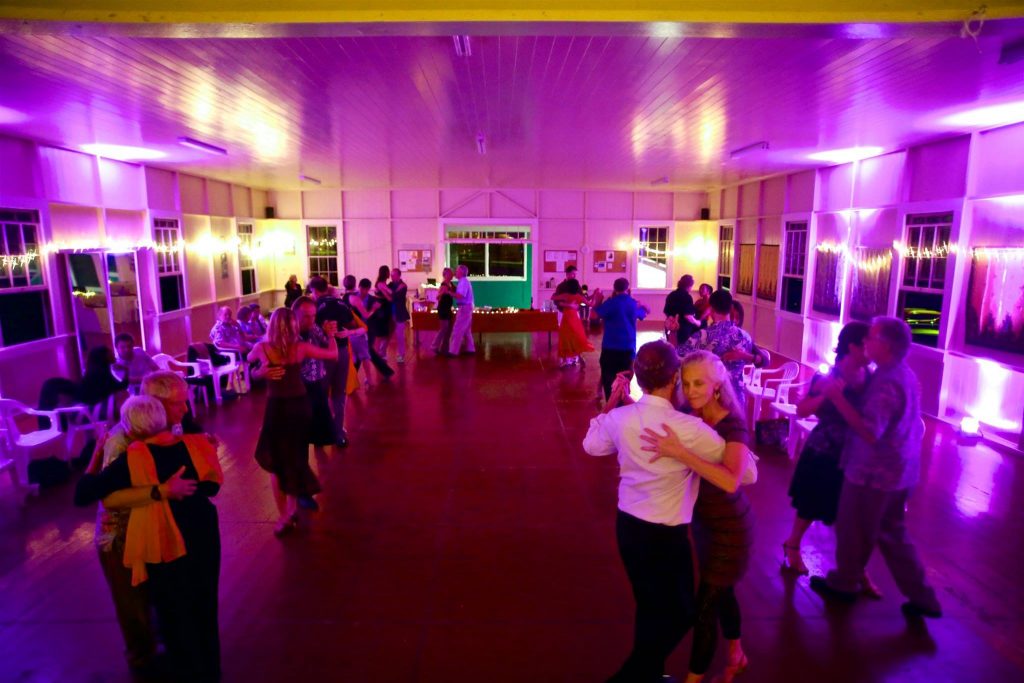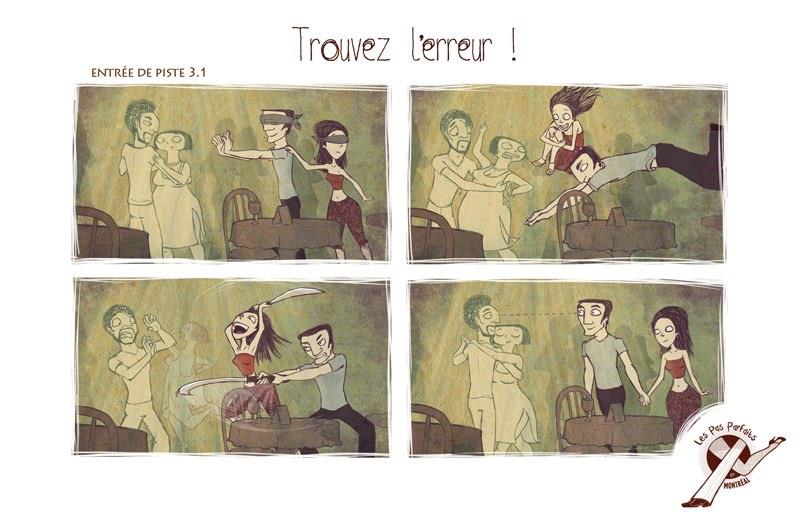
What is a Milonga?
A milonga is where one goes to dance Argentine Tango socially. People come as individuals or with a partner. Music is usually played in tandas, or sets, with 3 or 4 songs in a tanda. In betwen tandas there will be a cortina, a short music interlude (30 sec or so long) of non-tango music. This is the customary time to return to your seats and look for a new partner.
What is a Practica?
A practica is a place to practice Tango. Floorcraft protocols are generally relaxed as compared to a milonga. Specifically, it is acceptable to talk during the dance, and work on steps or figures.
Tango Music:
Milonga is also a style of dance, played and danced on the 2/4 beat rather than the standard 4/4. The music has a strongly accented beat based on the “habanera” rhythm. If Tango is danced with a serious face, Milonga is danced with a smile.
While a Tango dancer can pause over one or more beats, Milonga dancers usually dance on every beat. However, they can insert steps called the Traspie (syncopations).
Vals (Waltz) music is similar to a fast Italian Waltz. The Tango Vals dancers normally do not step on every beat. If they did, the dance would look like a Viennese Waltz. Instead, they can occasionally take two beats to make one step. Many leaders dance to a quick-quick-slow (one beat, one beat, two beats) rhythm. In addition, the giro or turn (in both directions) is frequently used in a Tango Vals giving it a characteristic look of frequent turns.
Other Tango Terminology:
Abrazo: The embrace – the source of the connection between dance partners. It is also where all movements are initiated: movements at the torso level are what produce movements of the legs and the feet.
Cabeceo: ‘Cabeceo’ refers to the traditional way to invite a partner on to the dance floor. After making focused and precise eye contact, the leader unmistakably nods at the follower. If the follower nods back, it means that the invitation is accepted.
Ronda (Line of Dance): The milonga etiquette is to dance counter-clockwise, using concentric lanes with the most advanced dancers on the outside and beginners at the center. Good etiquette includes the leader’s making eye contact before entering the dance floor and maintaining an equal distance between couples in the line of dance.

